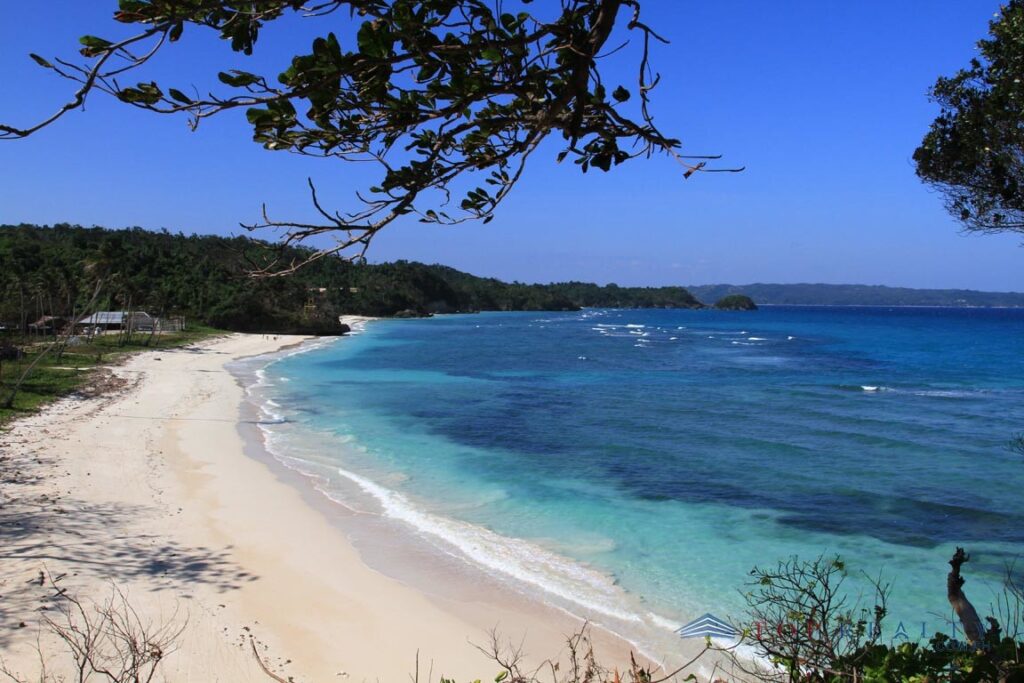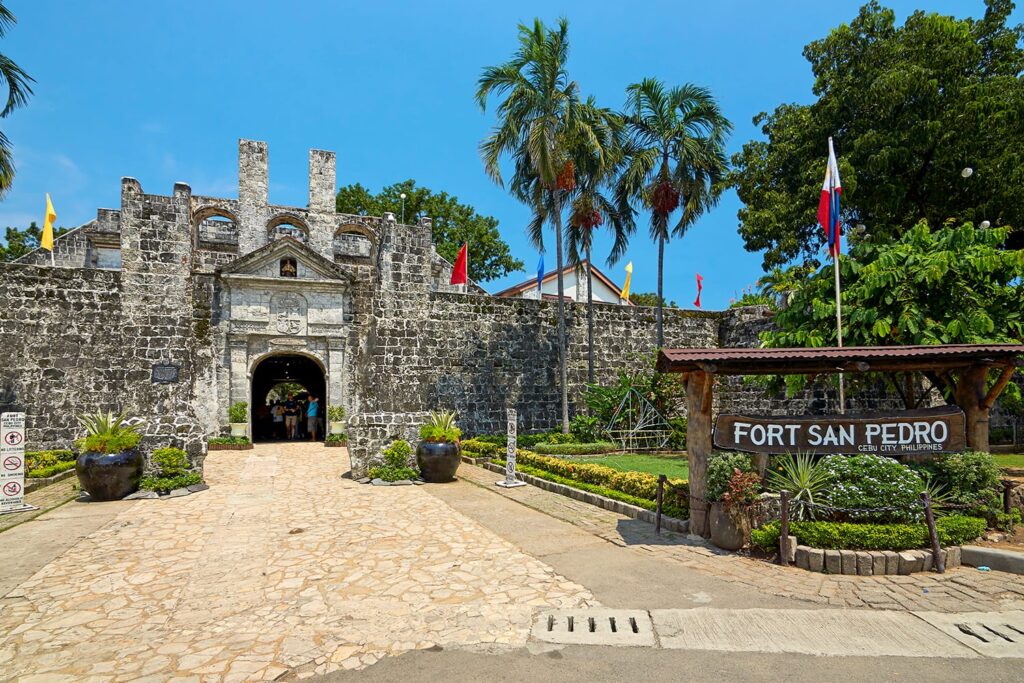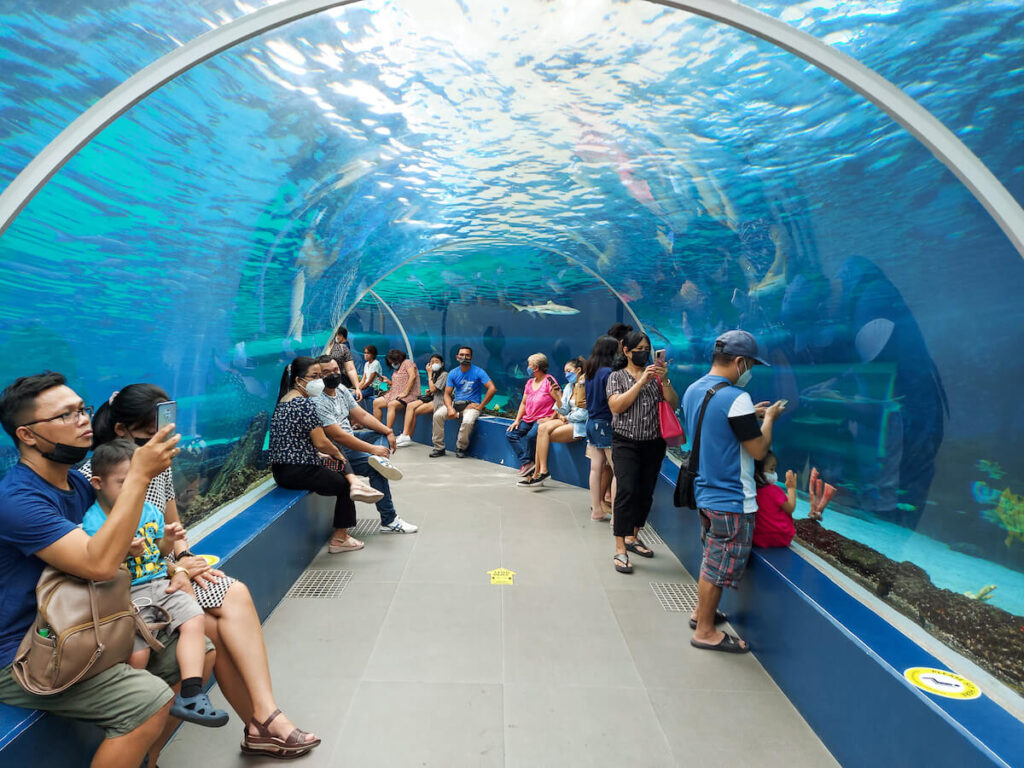
Temple of Leah
It is a prominent landmark located in Cebu City, Philippines. It is an elaborate Roman-style temple built by businessman Teodorico Adarna as a tribute to his late wife, Leah. Construction began in 2012 and was intended to be a lasting symbol of his love and devotion. The temple is characterized by its grand architecture, featuring impressive columns, arches, and a large central dome. The structure is surrounded by gardens and offers panoramic views of Cebu City.
Cebu Taoist Temple
It is a significant cultural and religious site. It is situated in the Beverly Hills Subdivision in Cebu City, providing a serene setting and a panoramic view of the city. It serves as a place of worship for the local Taoist community and is open to visitors of all backgrounds interested in experiencing Taoist practices and architecture. The temple features traditional Chinese architectural elements, including red and gold decorations, intricate carvings, and tiled roofs. The temple also has a dragon-shaped gate, and the overall design reflects Taoist principles of harmony and balance.


Sirao Flower Farm
It is also known as the “Little Amsterdam” of Cebu, is a popular attraction in Cebu City, Philippines. The farm is situated in Sirao, a mountainous area in Cebu City. It features a variety of flowers, including celosia (often referred to as cockscomb), sunflowers, and other seasonal blooms. It is open year-round, but the best time to visit is during the peak blooming seasons when the flowers are in full bloom.
10,000 Roses of Cebu
Located in Cordova, Cebu, is renowned for its stunning display of artificial roses that create a magical ambiance, especially when illuminated at night. The attraction features over 10,000 LED-lit roses arranged in a beautifully landscaped garden, making it a popular spot for photography and romantic outings. The 10,000 Roses Cafe has gained popularity on social media for its beautiful and visually striking setup, contributing to its reputation as a must-visit location in Cebu.


Kawasan Falls
Kawasan Falls is one of Cebu’s most famous natural attractions, known for its breathtaking beauty and vibrant turquoise waters. It’s recommended to visit during the dry season for the best water clarity and overall experience. Is situated in Badian, a municipality in the southern part of Cebu Island, Philippines. It’s approximately 130 kilometers from Cebu City, with a drive taking about 2 to 3 hours. The falls consist of three main levels, each with its own pool of clear, blue water that is ideal for swimming. The falls are popular for various activities including canyoneering.
Oslob Whale Sharks
In Oslob, Cebu, the whale shark watching experience is a major attraction where visitors can see these gentle giants up close in their natural habitat. Local operators offer guided tours that allow tourists to snorkel or dive alongside the whale sharks, providing a unique opportunity to observe them feeding and swimming in the clear waters. The whale sharks in Oslob are drawn to the area by a practice of handfeeding, where small fish are provided to attract them, making it easier for visitors to encounter these magnificent creatures.


Tumalog Falls
Tumalog Falls is situated in Oslob, Cebu, Philippines, relatively close to the popular whale shark watching site. The falls are accessible via a short trek or a ride on a local motorcycle (habal-habal) from the main road, followed by a walk down a well-maintained path. Known for its wide, curtain-like cascade and the stunningly clear, cool water that pools at its base. Best place for those looking to escape the crowds and enjoy a tranquil natural setting. The area has basic amenities for visitors, such as changing rooms and viewing areas, and is ideal for swimming and relaxing in its refreshing pools.
Sumilon Island Sandbar
Sumilon Island Bar is located on Sumilon Island, which is part of Oslob in Cebu, Philippines. It’s an ideal spot for unwinding after exploring the island’s natural beauty or engaging in water activities. It is known for its exclusivity, as it is home to the upscale Sumilon Bluewater Island Resort. Access to the island and its amenities, including the bar, is often limited to resort guests or those who have made special arrangements for day visits, ensuring a more private and luxurious experience.


Simala Church
Simala Church, officially known as the Monastery of the Holy Eucharist, is a grand and ornate church located in Sibonga, Cebu, Philippines. It is renowned for its impressive castle-like architecture, beautiful stained-glass windows, and intricate design. The church is a major pilgrimage site, attracting visitors who come to see the revered image of the Virgin Mary, believed to perform miracles. Its serene atmosphere, well-maintained gardens, and scenic surroundings make it a popular destination for both spiritual reflection and cultural exploration.
Magellan’s Cross
Magellan’s Cross is a historic landmark located in Cebu City, Philippines. It is a wooden cross planted by the Portuguese explorer Ferdinand Magellan in 1521 to mark the arrival of Christianity in the country. The cross is housed in a small, enclosed chapel in Cebu City’s Plaza Hamabar, and it is considered a significant symbol of the Philippines’ introduction to Christianity. The original cross is preserved inside a protective metal casing, while a replica stands in its place.


Basilica del Sto. Niño
The Basilica del Santo Niño, located in Cebu City, Philippines, is a historic Catholic church known for housing the Santo Niño, a revered statue of the Child Jesus. It is one of the oldest churches in the country, with a rich history dating back to the 16th century. The basilica features a grand facade and is an important pilgrimage site, drawing many visitors who come to venerate the Santo Niño and participate in religious festivities.
Fort San Pedro
Is a historic landmark located in Cebu City, Philippines. The fort was originally built by Spanish conquistador Miguel López de Legazpi in 1565. It is the oldest and smallest fort in the Philippines. It was constructed as a military defense structure during the Spanish colonial period. Its primary function was to protect the Spanish settlement from pirates and other invaders. The fort is a triangular bastion fort with thick stone walls. It features a moat and three bastions at its corners.


Yap-Sandiego Ancestral House
Located in 155 Mabini Street, Parian, Cebu City. The Yap-Sandiego Ancestral House is one of the oldest houses in Cebu City, dating back to the late 17th century. It was built in 1675 by Chinese settlers, reflecting the rich cultural and historical tapestry of Cebu’s early interactions with Chinese immigrants. The house is a prime example of Spanish colonial architecture combined with traditional Chinese elements. It features the distinctive characteristics of old Filipino houses, including wooden floors, Capiz shell windows, and intricate wooden carvings.
Museo de Parian
Cebu de Parian is a historical area in Cebu City, Philippines, known for its rich cultural and commercial significance. It was a bustling trading district during the Spanish colonial era, where Chinese immigrants settled and established businesses. The area is notable for its historic buildings and streets that reflect Cebu’s diverse heritage. Today, it offers a glimpse into the city’s past and is a point of interest for those exploring Cebu’s history and cultural evolution.


Casa Gorordo Museum
The Casa Gorordo Museum is a well-preserved historical house museum located in Cebu City, Philippines. It provides a fascinating glimpse into Filipino colonial life during the late 19th and early 20th centuries. The museum is housed in a Spanish colonial-era house that was built in 1850 and served as the residence of the Gorordo family, who were prominent figures in Cebu’s history.
Museo Sugbo
A prominent museum located in Cebu City, Philippines. It serves as the provincial museum for Cebu and is housed in a historic building that was originally the Cebu Provincial Jail. The museum is located in a building constructed in 1937 and served as a provincial jail until 2004. Its architecture reflects the Art Deco style of the period, and the transition from a jail to a museum marks a significant repurposing of historical infrastructure.


Cebu Safari
Cebu Safari & Adventure Park, located in Carmen, Cebu, Philippines, is a unique wildlife and adventure destination. Here are some brief details. In addition to animal exhibits, Cebu Safari offers adventure activities such as zip-lining and off-road tours. The park’s layout includes scenic trails and viewpoints, enhancing the overall visitor experience. The park features a diverse collection of animals, including African and Asian species like lions, zebras, and various exotic birds. It provides an opportunity for visitors to experience wildlife in a well-maintained, spacious environment.
Cebu Ocean Park
It features a variety of marine life exhibits, including fish, sharks, rays, and other aquatic species. The park has a large, walk-through tunnel that allows visitors to observe marine animals up close as they swim above and around them. The park offers educational shows and interactive experiences aimed at teaching visitors about marine conservation and the importance of protecting ocean ecosystem. Cebu Ocean Park includes amenities such as a café, souvenir shops, and designated areas for guests to relax, making it a family-friendly destination for learning and entertainment.

